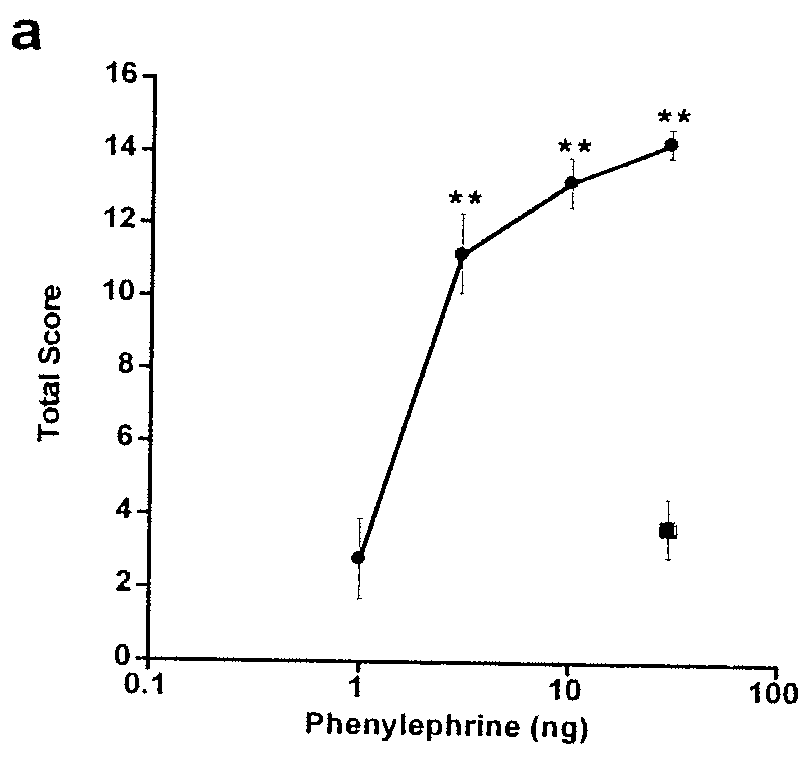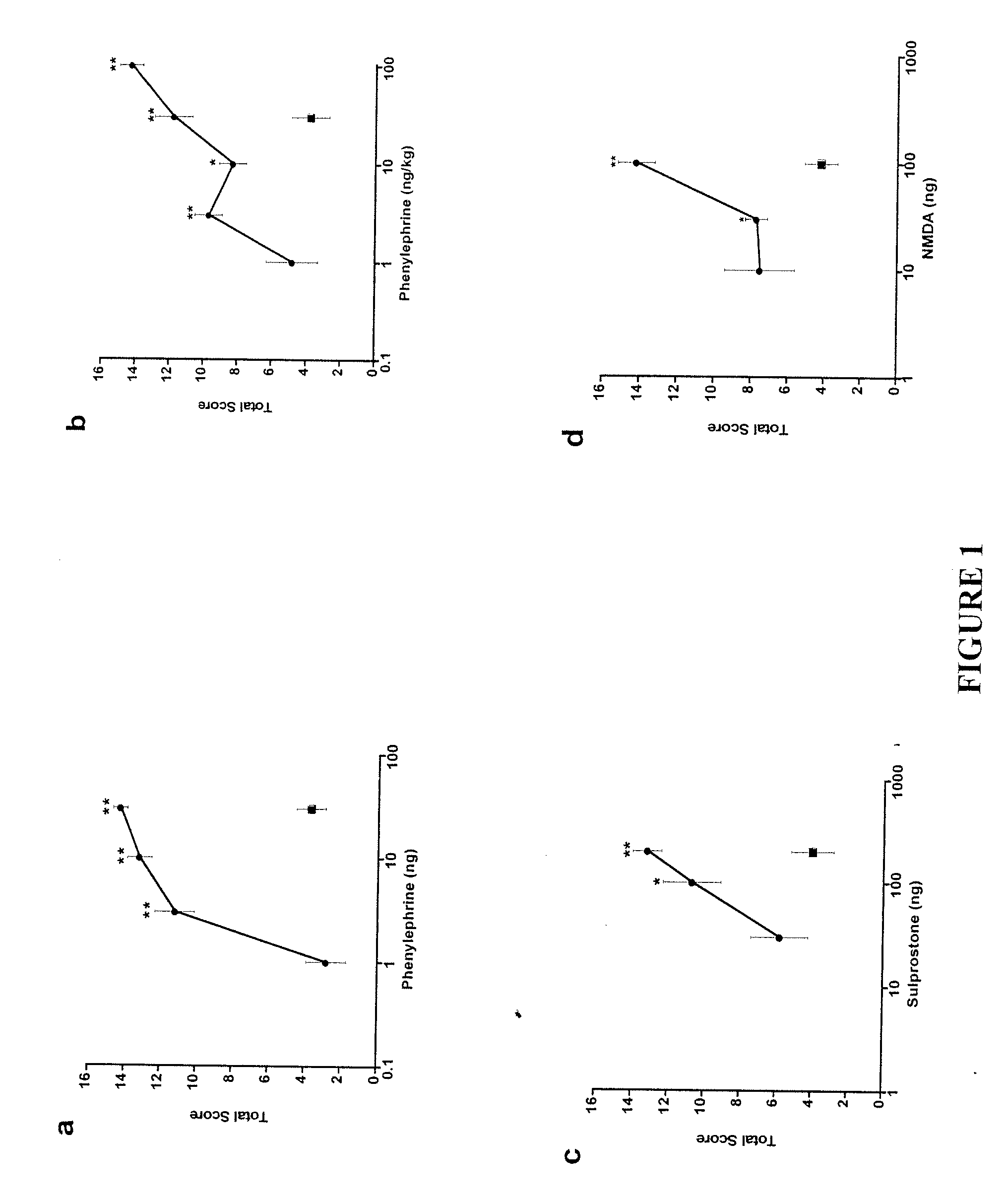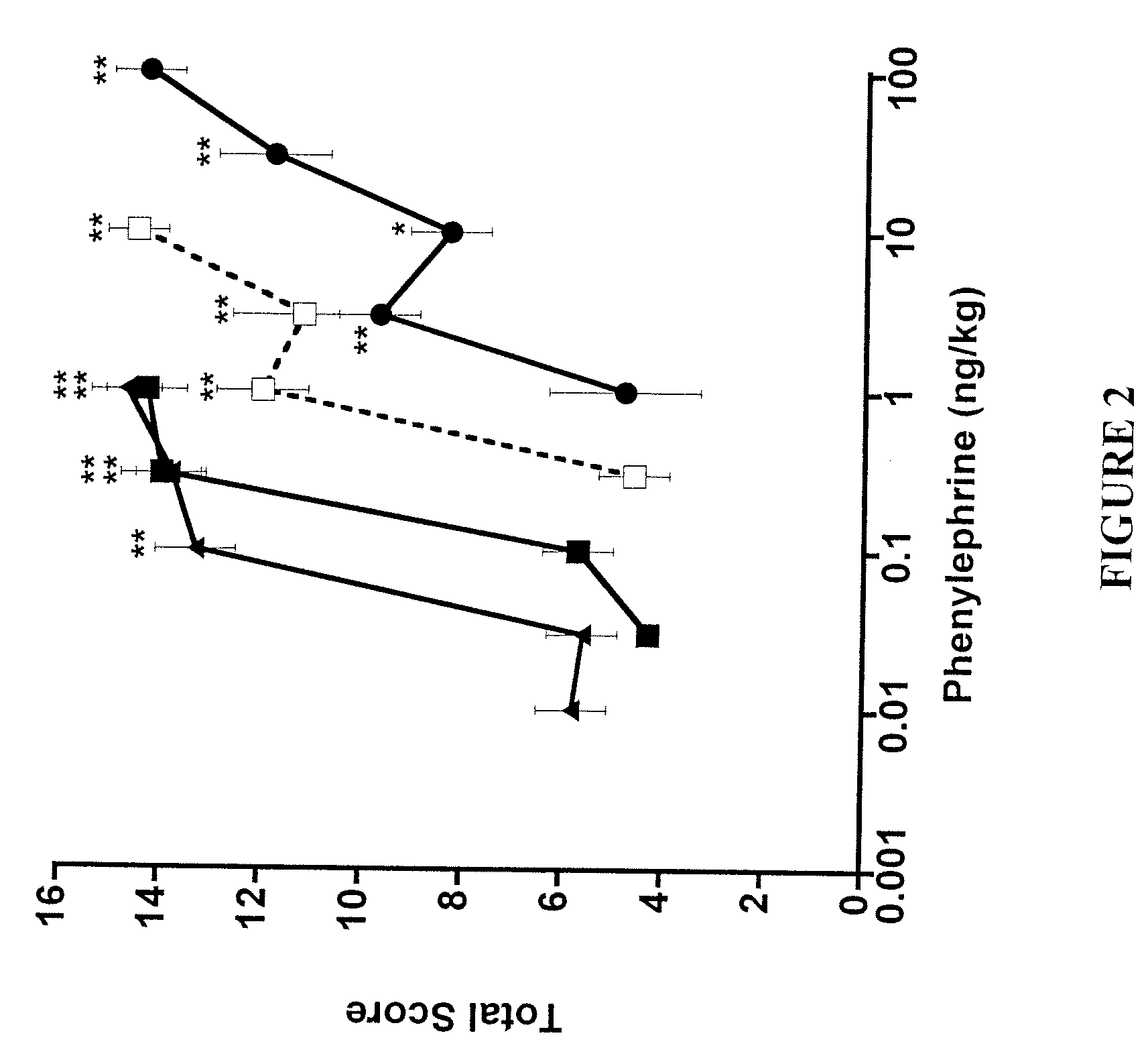Methods of preventing and reducing the severity of stress-associated conditions
a technology of stress-associated conditions and methods, which is applied in the field of adrenergic agonists, can solve the problems that the treatment of such stress-associated conditions has generally been ineffective or unsatisfactory, and achieve the effects of preventing or reducing the severity of gastrointestinal disease, preventing or reducing the severity of irritable bowel syndrome or dyspepsia, and preventing or reducing the severity of tachycardia
- Summary
- Abstract
- Description
- Claims
- Application Information
AI Technical Summary
Benefits of technology
Problems solved by technology
Method used
Image
Examples
example i
Preparation of Brimonidine
[0060]This example describes preparation of brimonidine (5-bromo-6-(2-imidazolin-2-ylamino) quinoxaline).
Preparation 6-Amino-5-bromoquinoxaline hydrobromide
[0061]6-Aminoquinoxaline (2.08 g, 14.4 mmol) was dissolved in 11.5 ml glacial acetic acid. The solution was cooled in water while a solution of bromine (0.74 ml, 2.3 g, 14.4 mmol) in 1.5 ml glacial acetic acid was added slowly over 15 minutes. After stirring for an additional 30 minutes, the orange red solid formed was filtered off and washed thoroughly with dry ether. The solid was dried in vacuo overnight to yield 4.44 g crude product (a yield of 100%). The compound, 6-amino-5-bromoquinoxaline hydrobromide, had no definite melting point. A phase change from fine powder to red crystals was observed at about 220° C. Decomposition was observed at about 245° C. The material was used directly for preparation of 6-amino-5-bromoquinoxaline as follows.
6-Amino-5-Bromoquinoxaline
[0062]Crude 6-amino-5-bromoquinox...
example ii
Mouse Models with Different Mechanisms of Sensory Sensitization
[0069]This example demonstrates that the increased sympathetic tone of α-2A and α-2C knockout mice enhances induction of tactile hypersensitivity by α-1 receptor activation.
A. Sulprostone-Induced Tactile Hypersensitivity is Driven by the Sympathetic Nervous System while Phenylephrine-Induced Tactile Hypersensitivity is Independent of Sympathetic Nervous System Input
[0070]To dissect the contribution of the sympathetic nervous system to sensory sensitization, mouse models having different mechanisms of sensory sensitization were developed. Tactile hypersensitivity was measured in mice following intrathecal or intraperitoneal injection of an inducing agent by scoring the response to light stroking of the mouse flank with a paintbrush. To mimic increased sympathetic tone, phenylephrine, an α-1 adrenergic receptor agonist, was injected. As shown in FIGS. 1a and 1b, intrathecal (i.t.) or intraperitoneal (i.p.) dosing of phenyl...
example iii
Comparison of Activity of α-2 Agonists Brimonidine and Clonidine
[0084]This example demonstrates that α-adrenergic agonists differ in their ability to alleviate sensory hypersensitivity that is enhanced by the sympathetic nervous system.
A. Brimonidine, But not Clonidine, Alleviates Sympathetically-Enhanced Tactile Hypersensitivity
[0085]Spinally administered α-2 adrenergic agonists alleviate neuropathic pain through a spinal α-2A receptor. To determine if the increased sympathetic activity in α-2 knockout mice alters the analgesic activity of the α-2 agonists, several agonists were assayed for activity. The α-2 agonists brimonidine and clonidine were first tested in the NMDA model in which sensitization is not influenced by the basal sympathetic tone of the knockout mice. Intrathecal co-administration of NMDA with either clonidine or brimonidine resulted in complete inhibition of tactile hypersensitivity in the wildtype and α-2C (FIGS. 5a and c, respectively) knockout mice. As expecte...
PUM
 Login to View More
Login to View More Abstract
Description
Claims
Application Information
 Login to View More
Login to View More - R&D
- Intellectual Property
- Life Sciences
- Materials
- Tech Scout
- Unparalleled Data Quality
- Higher Quality Content
- 60% Fewer Hallucinations
Browse by: Latest US Patents, China's latest patents, Technical Efficacy Thesaurus, Application Domain, Technology Topic, Popular Technical Reports.
© 2025 PatSnap. All rights reserved.Legal|Privacy policy|Modern Slavery Act Transparency Statement|Sitemap|About US| Contact US: help@patsnap.com



